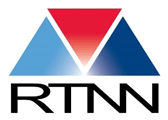The RTNN has several new tools online with many more scheduled for installation in the coming months. Please contact rtnanonetwork@ncsu.edu with any questions regarding technical information or access.
FEI Titan Krios Cryo-Transmission Electron Microscope (Cryo-TEM): This 300 keV instrument offers atomic scale resolution of samples held at cryogenic temperatures and is the most powerful and flexible high-resolution electron microscope for 2D and 3D characterization of biological samples on the market. Its cryo-based technology and stability allows for single particle analysis and dual-axis cellular tomography of frozen hydrated cell organelles and cells. The TEM is equipped with a robotic loader, capable of handling up to 12 frozen hydrated samples for increased throughput. Lab renovations are underway for this new Cryo-TEM.
Atomic Force Microscope (AFM): The Asylum AFM includes an MFP-3D head, an XY scanner, and a base. The MFP-3D head offers low noise and precise measurements of the cantilever position for accurate force and topography measurement. The XY-scanner provides flat scans and the ability to accurately zoom and offset with one mouse click. The 3D base offers three configurations for illuminating and viewing samples: top view for opaque samples, bottom view for transparent samples, and dual view for both viewing options.
Raman Microscope: This XploRA PLUS Confocal Raman Microscope includes integrated imaging spectrometer with 4 gratings mounted on motorized turret for full resolution, range and coverage as well as low noise full range CCD detector. It comes with motorized computer controlled 6 position ND filter wheel, confocal pinhole, entrance slit and coupling optics, laser and filter selection. The instrument includes 532 nm and 785 nm Raman excitation laser sources. It offers fast confocal imaging, automated laser wavelength switching. It provides sample identification and chemical imaging on a microscopic scale.
Atomic Layer Deposition (ALD): A newly installed ALD system has allowed us to add 6 precursor lines in one of the facilities, including a low vapor pressure (LVP) delivery line, and has also relieved scheduling pressure that users were experiencing on the original system. New precursors that we have been exploring since the purchase of the new system include a number of metal organics for depositing CuO, Ga2O3, HfO2, Nb2O5, WO3, and ZnO. The Ultratech Fiji 200Gen 2 Plasma ALD system has four precursor locations and four gas lines into the system for depositions. This instrument is a modular, high-vacuum system that accommodates a wide range of deposition modes.
E-beam lithography: A new Nanometer Pattern Generation System (NPGS) system was installed in one of our focused ion beam (FIB) systems. The NPGS is designed as an e-beam lithography system, but can also be used with the focused ion beam as well. The system can achieve for patterning with resolution on the order of less than 20 nm for the electron beam and less than 50 nm for the ion beam.
Maskless Lithography System: The Heidelberg Instruments µPG 101 is a direct write lithography system equipped with a 375 nm ultraviolet diode laser capable of exposing feature sizes down to 0.6 µm on either positive or negative photoresists on samples sizes of 10 mm x 10 mm up to 6” x 6”. In addition to full exposure, it has the ability to create surface topographies for gray scale applications.
Reactive ion etcher: The Oxford Plasmalab100 is an induced coupled plasma etcher dedicated to GaN etching.
Cathodoluminescence Imaging and Spectroscopy Detection: The Horiba HCLUE will be installed on our cryo-scanning electron microscope this fall. The spectroscopy system has a focal length of 320 mm and will operate in the ultraviolet-visible range (200-1050 nm). Panchromatic or monochromatic imaging is available in the system.
Retractable Detectors: Two new detectors will be installed on our dual beam FIB/SEM. The retractable annular scanning transmission electron microscope (STEM) detector enables scanning transmission imaging in bright field, dark field, and high-angle dark field modes. The detector includes a special sample holder that can hold up to 6 transmission electron microscopy (TEM) grids and is compatible with the holder used for thin sample preparations. The retractable directional backscatter (DBS) detector features four concentric ring segments that enable separate detection of electrons emitted at different angles. This detector is an ultra-sensitive, Solid State (SS) detector which is sensitive to emitted electrons from 500 V onwards. Using the option beam deceleration, images with beam landing energies down to 50 V are possible. This detector is mounted on a software-controlled retractable arm and allows simultaneous energy dispersive X-ray spectroscopy (EDS) spectra acquisition for WD ≥ 10 mm.
Rapid Thermal Processor: The Annealsys AS-One 150 is a rapid thermal processing tool that will be capable of running samples from small pieces to 6” wafers, up to 1300˚C with pressure ranges from atmospheric conditions to high vacuum.

